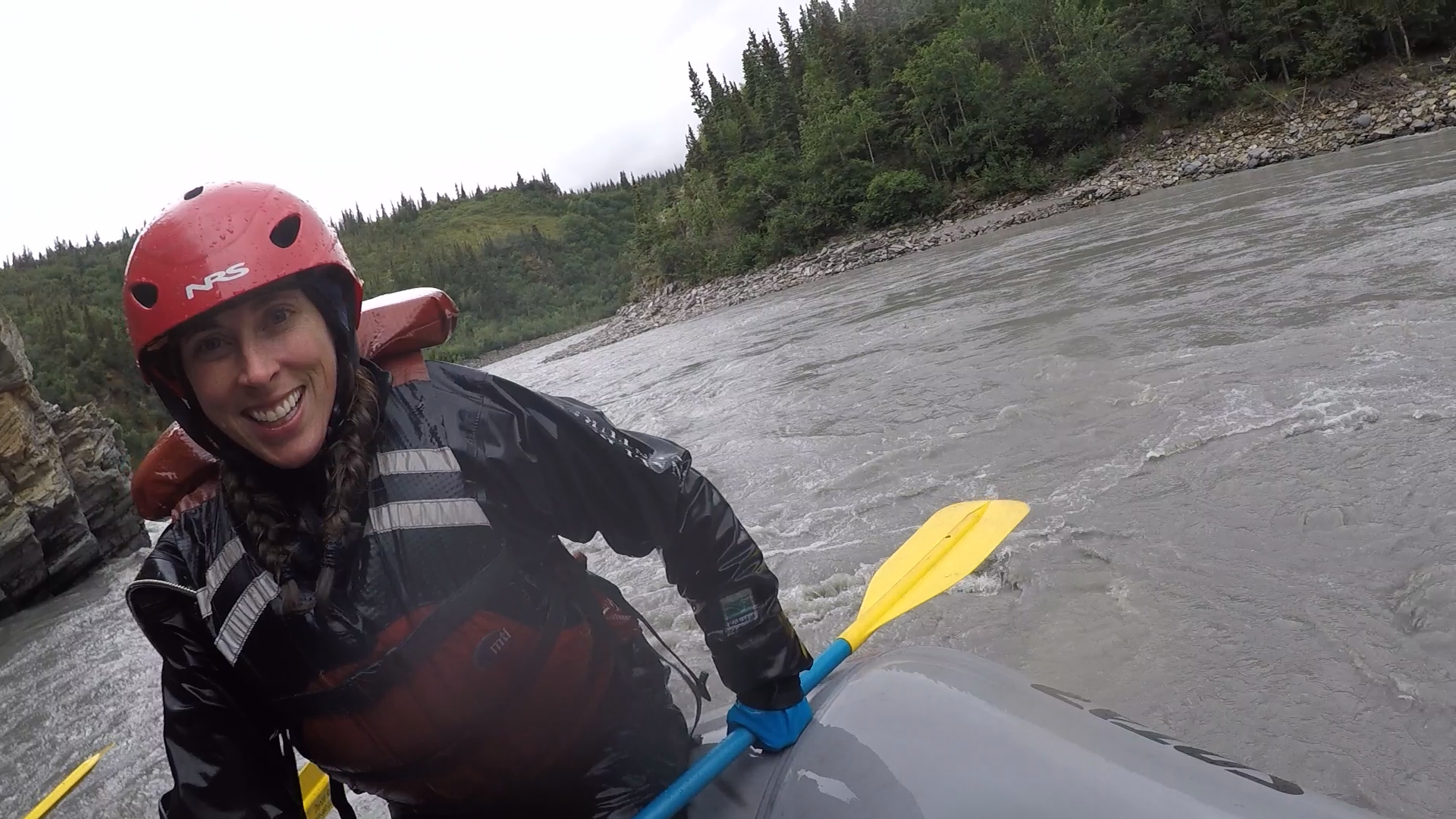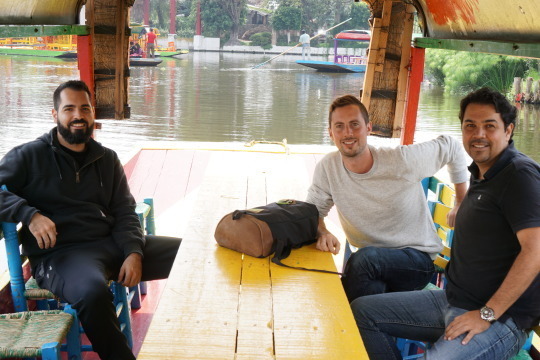International Day of the World’s Indigenous People

August 9th marks the first meeting of the United Nations’ Working Group on Indigenous Populations in 1982 and the occasion designated by the UN General Assembly for honoring 370 million Indigenous People living across 90 countries who remain subject to political, economic and social oppression.
Indigenous People are defined as ethnic groups originally in a territory prior to being
incorporated into a national state, and who are politically and culturally separate from the majority ethnic identity of the state that they are a part of.
This summer, fourteen Fund for Teachers Fellows chose to research Indigenous People on three continents to increase student awareness and appreciation of the history, culture and challenges faced by those also known as first peoples, aboriginal peoples and native peoples. Read on to see how these teachers pursued knowledge of and experience among these inheritors and practitioners of unique cultures and ways of relating to people and the environment.*
Charles FitzGibbon and Christine Faye Dunbar (Metropolitan Expeditionary Learning School– Forest Hills, NY) used photo journalism and oral interviews to examine the immediate effects of climate change on coastal Alaskan natives. They plan use their research to convey to students the interaction between individuals, communities, government policy and the climate.

Charles inspecting ice caves beneath Mendenhall Glacier on a hot day in Juneau, AK.
Their excellent blog documenting the fellowship begins:
“We are two teachers from a public 6-12 school in Queens, New York, who are traveling this summer to Alaska on a research grant from Fund for Teachers. We’re passionate about the work we engage our students in, and strive to make learning as relevant and real-world as possible. Our mission this summer is to research the impacts of climate change on coastal
communities, particularly those in the arctic region who are facing the more drastic effects of warming temperatures, melting permafrost, and land erosion. Namely we seek to answer three key research questions:What challenges do coastal Alaskan communities face in the age of climate change?
How do borders ensure, enshrine, and entrap the communities of coastal Alaska?
What can be done to preserve and affirm the cultures of indigenous peoples as climate change threatens the future of their communities?”
For 21 days, Christine and Charles explored Juneau, Nome, Shishmaref, Fairbanks, and Prudhoe Bay, providing a broad scope of how climate change is impacting the state, its economy and social fabric. Click here to see what they discovered.
Glen Meinschein, Greg Gentile and Alejandro Avalos (Brooklyn School for Collaborative Studies) investigated of one of the most controversial figures in Mexican history, “La Malinche,”
by exploring across Mexico themes of colonialism, feminism and indigenous history to engage students of different backgrounds and support their academic achievement.
This blog documents their experiences, characterized by the sentence, “It was unsettling how much of our investigation of her has resulted in silence, shrugs or lack of any answers or any significant information.”

Exploring Xochimilco, a part of Mexico City where Aztecs built floating islands, or chinampas.

Learning about the Huran Wendat tribe on the Wendake Reservation.
Renee Lukaniec (Fox Run Elementary – Norwalk, CT) was handed a curriculum, outdated textbooks and asked to teach a unit on Native Americans three years ago. The search for authentic information and artifacts inspired her Fund for Teachers fellowship living and learning on the Huron-Wendat Nation reservation in Quebec. Read more of her experiences here.
Michelle Broxterman and Rachel Southard (Westside Elementary – Pittsburg, KS) chose to investigate with their Fund for Teachers grant the Mashallese people, culture and environment because their classes increasingly welcome immigrants from the cluster of small islands in the Pacific Ocean. Despite the contingency of immigrants living in their small town, the teachers found that many people have no idea where the Marshall Islands are. Their goal is to reach, teach and assimilate Marshallese students and families – and to educate the community about their new neighbors. In their grant proposal, Michelle and Rachel wrote:
“The Marshall Islands face numerous obstacles resulting from global warming and continued effects of nuclear testing. According to scientists, the Marshall Islands could be underwater within our lifetime. These looming threats have resulted in a mass immigration of over 20,000 Marshallese people living in the US. Although there has been a large influx of Marshallese people, their language and culture are relatively unknown and seem to be gradually disappearing along with their islands. We feel an urgency to gain as much information as we can now because later may not be an option.”

Rachel and Michelle checked in after their fellowship:
Our fellowship took us to Majuro, the capital of the Marshall Islands, for an amazing experience. We were able to ride on a traditional Marshallese canoe, sample local foods and gain a deeper understanding of the nation’s history. In addition, we studied the Marshallese educational system and toured an elementary school.
The most meaningful part of our fellowship was spending time with the people. We were welcomed with open arms by relatives of our Marshallese students. They ensured that we were able to learn a large amount of
information in a short period of time. It was obvious that generosity, caring, resilience and hospitality were and continue to be key attributes in the Marshallese culture. It is our hope that from our fellowship, we will help our Marshallese students to be proud of their heritage and continue on their traditions.
Additional 2017 Fellows focusing on First Peoples include:

- Kelly Shea and Sherry McCullough – Meeting with Maori guides and professors from the University of Auckland in New Zealand,to learn how the Maori use storytelling to represent cultural values and unify community for a new “Power of Language” unit (pictured above with guide Robert McDonald on top of Te Mata Peak).
- Rebekah and Robert Polemeni – Investigating in five national parks the impact of climate change, with a specific focus on drought and indigenous peoples, to guides students’
creation of a local service project based on water conservation. - Amy Manware – Volunteering with conservation groups and native communities in Hawaii to
learn about ecological restoration, explore the impact of water on ecosystems and create blended learning activities that integrate Next Generation Science Standards and enrich STEM and instructional technology curricula. - David Hunt – Investigating the effect of 1800’s Westward Expansion on the American
Tribes of Arizona, Oklahoma, South Dakota and Montana to better teach topics including The Trail of Tears, Battle of Apache Pass and surrender of Geronimo, Battle of Wounded Knee and the Battle of Little Big Horn. - Judie Cavanaugh – Exploring the art and culture of Indigenous Peoples of the Pacific
Northwest to integrate art lessons with social studies curriculum. - Rebecca Cutkomp – Exploring Washington’s Spokane Indian Reservation and Alaska’s Denali National Park to enrich student learning in thematic units on identity and aid in students’ deeper insight into rhetorical analysis.
- Timothy Kiser and Vincent McCollum – Exploring Dominica’s history and geography through an intersectionality lens of race and colonization to better understand two central questions: How did the Kalinago survive while others did not? and why do the Kalinago continue to thrive? And,
- Samantha Verboven – Observing Alaska’s Native American population and the culture of
storytelling to create a after school writing club based on reader’s theater designed to improve oral storytelling techniques and the narrative writing process.
Click on the following links for further research accomplished by previous Fund for Teachers Fellows on:
The Aborigines
The Lakota Sioux, Blackfoot and Salish Peoples
* Indigenous People at the UN web site
 Back to Blogs
Back to Blogs